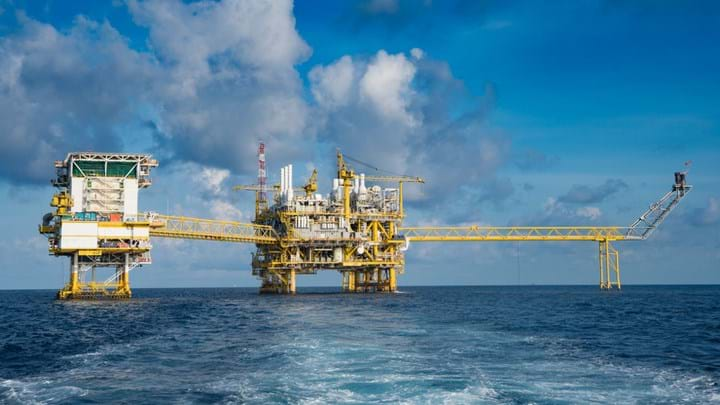US oil and gas lagging in efforts to achieve net zero, says Carbon Tracker

US OIL and gas majors are lagging behind European rivals as companies seek to transition towards net-zero, according to a report from think tank Carbon Tracker. However, both US and European companies have work to do to ensure they are prepared for the energy transition challenge.
Transition to a net-zero world represents an existential challenge for oil and gas majors, says Carbon Tracker. Released on 9 October, its report, Fault Lines: How diverging oil and gas company strategies link to stranded asset risk, compares nine of the biggest private-sector companies, to gain insight on how well prepared they are for the transition.
According to the report, European companies are starting to take a more holistic view of the energy transition and are adapting their strategies. Recently-announced transition plans include cutting assumptions about future oil prices and setting increasingly ambitious climate targets, and this is reflected in more conservative portfolios. Fault Lines finds that these factors are correlated and that setting conservative price assumptions or stronger emissions ambitions appears to be related to holding a base of project options that is more resilient in the transition.
US companies are lagging on all three of these closely-correlated factors and their portfolios are found to be vulnerable to asset standing in the transition, and their emissions ambitions fail to link the full impact of their activities on the atmosphere. Stranded assets are those which fail to generate returns as a result of changes associated with the energy transition, according to Carbon Tracker. Despite not disclosing price assumptions, Carbon Tracker says that based on their project portfolios, US companies continue to expect high demand and prices compared to European rivals.
Notably lagging behind the competition is ExxonMobil, which Carbon Tracker finds to be least prepared. Exxon is ranked last in terms of its climate target (meaning it was found to have the weakest ambitions) based on Carbon Tracker’s framework and 80–90% of its business-as-usual (BAU) portfolio is at risk in a 1.6°C scenario.
To varying degrees, European companies show less exposed portfolios, have more meaningful emissions targets, and are increasingly bringing in absolute emissions characteristics and more conservative impairment price assumptions.
Majors forming the top five most-prepared companies include those which have previously announced commitments to achieving net zero by 2050; BP (which has revealed its net zero strategy), Repsol, Shell, and Total.
BP and Eni are the best-prepared companies, according to Carbon Tracker. The report says 40–50% of Eni’s BAU portfolio would not be competitive if climate change is limited to 1.6°C. For BP, 50–60% of its portfolio is at risk. Respectively, BP and Eni rank as first and second in climate target ambitions, and they both make comparably low oil price assumptions of US$60/bbl, for the 2020–2050 period.
Though European companies are shown to be best prepared, Equinor stands as an outlier. The company ranks sixth in term of climate ambitions and its oil price assumption is at US$82/bbl. In a 1.6°C pathway, 80–90% of its portfolio would not be competitive.
Andrew Grant, Carbon Tracker’s Head of Climate, Energy & Industry Research, said: “Very few parts of fossil fuel producers’ business models will be left unshaken by the energy transition. European leaders like Eni and BP are responding with an increasingly joined-up approach but for Exxon and others, the only consistency is how completely they shy away from decarbonisation.”
Fault Lines warns that fossil fuel demand must fall to meet climate targets and that only the lowest-cost projects will deliver returns. Yet most oil majors, including European companies, have invested in projects which are inconsistent with aims set by the Paris Agreement – keeping global warming “well below” 2°C and pursuing efforts to limit to 1.5°C.
Fault lines identified 15 projects approved in 2019 which suggest the companies are betting on prices inconsistent with climate targets and which are at risk of becoming stranded in a low-carbon world. Together these projects account for US$60bn in associated capex over the next decade.
They include:
- ExxonMobil’s US$10bn Golden Pass liquefied natural gas project in the US;
- Chevron and Total’s US$6.3bn ultradeep water Anchor oil project in the US;
- Shell and Total’s US$3.9bn ultradeep water Mero Sepetiba project in Brazil; and
- BP, ExxonMobil and Equinor’s US$3.3bn deepwater Azeri Central East project in Azerbaijan.
Considering the impacts of Covid-19, Fault Lines says that the pandemic has highlighted that “the time for dawdling is over”. Whether the suggestion that oil demand has already peaked is correct, sharp volatility in the oil price and a big hit to demand expectations have acted as a reminder of the urgency of mitigating exposure to fossil fuels.
Some companies have suggested that oil demand has peaked. BP, for example, said in its 2020 Energy Outlook that in low-carbon scenarios, demand for liquid fuels never recovers from the fall caused by Covid-19, implying that oil demand peaked in 2019 in these cases. In its 2020 Energy Transition Outlook, DNV GL said oil demand is expected to reduce by 13% for 2020, leading to 2019 being the most likely peak for oil.
Mike Coffin, Senior Analyst and report co-author, said: “A growing number of oil and gas producers have recognised the fundamental impact the energy transition will have on their core business models and are setting climate targets, lowering price forecasts and writing down assets. However, there is a long way to go before they can be viewed as aligned with the Paris Agreement, and the risk of stranded assets is still very real.”
Fault Lines updates on previous work on this scheme, Carbon Tracker’s 2 Degrees of Separation series, including 2019’s Breaking the Habit.
Recent Editions
Catch up on the latest news, views and jobs from The Chemical Engineer. Below are the four latest issues. View a wider selection of the archive from within the Magazine section of this site.




